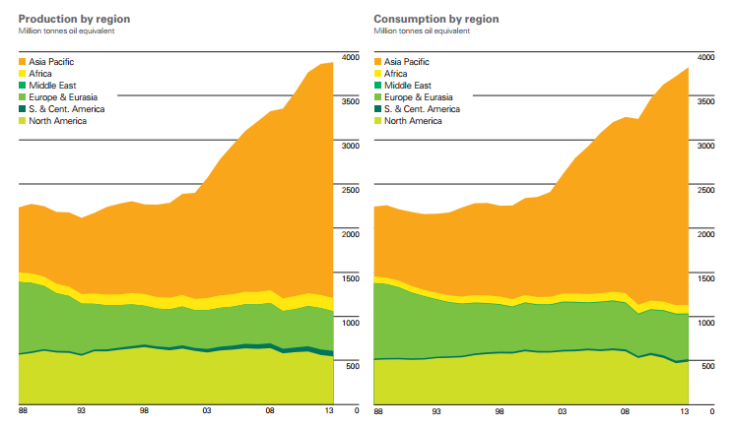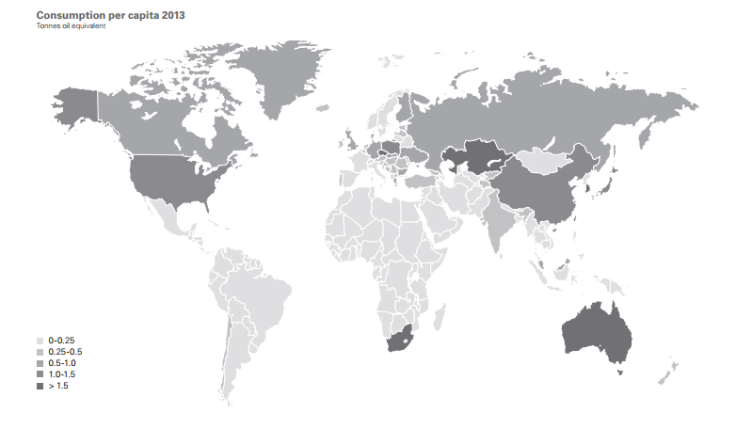Coal Growing Its Share Of Global Energy Mix Despite World's Greening Efforts

Despite the abundance of natural gas in the U.S. and Europe’s efforts to reduce greenhouse gas emissions, coal, the fastest-growing fossil fuel, met 30.1 percent of the world’s energy demands last year, its highest share since 1970, according to BP’s Statistical Review of Energy unveiled Thursday.
The rapidly growing economies of China and India accounted for 88 percent of global growth in coal consumption, which saw a 3 percent rise in 2013, according to the review, while growth in natural gas consumption actually decelerated everywhere except North America. There are several reasons: Coal is relatively abundant around the world, it's cheap to burn compared to other methods of generating electricity, and in the past two years prices for coal have declined. World coal production increased by 0.8 percent last year, well below the rise in coal consumption.

The strong demand for coal shows how difficult it will be to replace as efforts by developed nations to reduce pollution and add renewable energy to their power grids will be overwhelmed by the growth of developing nations relying on coal.
Only oil meets a larger share of global energy demand, 32.9 percent last year, according to BP. Massive investment in shale fueled the world’s largest increase in oil production in the U.S. last year and one of the largest increases in oil production the world has ever seen, offsetting numerous disruptions in global oil markets and keeping prices stable, BP chief executive Bob Dudley wrote about the report.
However, there’s a possibility coal could outpace oil. The International Energy Agency (IEA) forecasted in 2012 that coal would become the world’s top energy source by 2017. IEA expects that between 2012 and 2017, annual global coal consumption will rise by 1.2 billion tons, the amount of coal consumed by Russia and the U.S. combined in 2013.
Still, coal consumption’s growth last year was below its 10-year average of 3.9 percent, and new government regulations like those U.S. President Barack Obama and his administration has imposed will force many coal plants to close. Much of coal’s future depends on China, which accounts for nearly half of global coal consumption but is trying to reduce smog and increase its use of natural gas. China’s demand for coal grew in 2013, but at its slowest rate since 2008, according to BP.

© Copyright IBTimes 2025. All rights reserved.






















